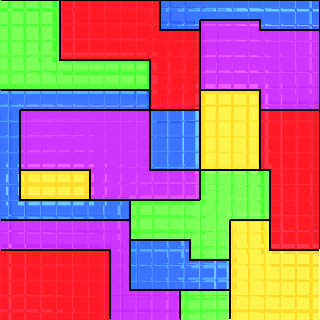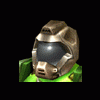Hi all,
I'm having trouble coming up with a way to generate a specific kind of dungeon. My goal is something like this:

I've read several articles concering dungeons but they all generate a more classic lay out, separate rooms connected with corridors.
Thus the issue is that I can't come up with a good approach to split a given square area (32x32 for example) up into tightly placed rooms, who shouldn't be rectangular all the time, but also not to randomly shaped (think of jagged edges etc, since I will only be using horizontal and vertical walls).
Currently I'm just adding in random rectangles that either clip or merge with existing ones until the area is covered, which is slow and not always satisfactory. I tried using some variety of drunk-walk approaches, which was too random, and binary space partitioning which didn't really yield either.
So, what would be the most likely to work out? How can I tackle this?
Thanks in advance





